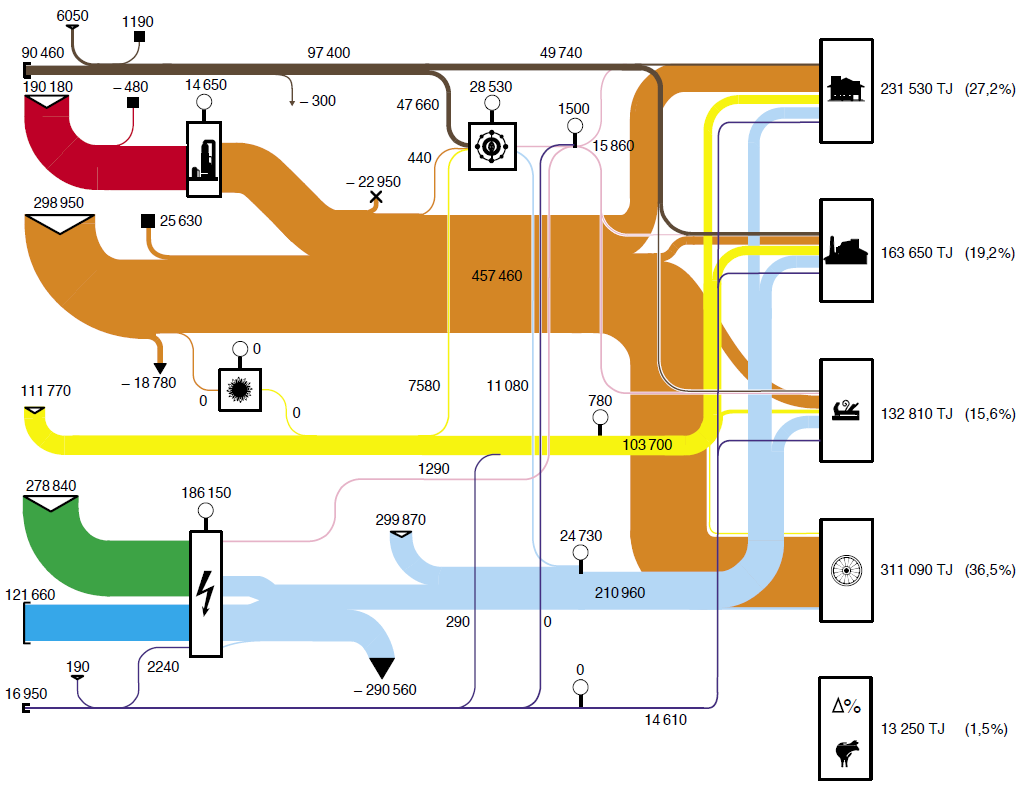Sidebar
What does this indicator reflect?
Final energy consumption
 Swiss energy flows, OFEN 2012
Swiss energy flows, OFEN 2012
Contents
RELEVANCE – Why does it matter for Switzerland?
Final energy consumption provides an absolute measure of the energy used in Switzerland per year, allowing the trend to be followed over time. It is significant as an absolute number since it considers energy from all sources, whether imported or not and so annual import variations are removed. Reducing final energy consumption over time and across sectors is important since energy of all types (renewable as well as non-renewable) brings negative impacts in some form.
Final energy consumption can provide an indicator of overall energy intensity of a country by taking a national total of final energy consumption and dividing by a measure of economic activity, such as GDP (a coarser measure is per head of population). A high level of energy intensity indicates that a country’s economy uses relatively more energy to produce a unit of economic activity than one with a lower intensity. Comparing countries with economies that have similar industry mixes (not necessarily of the same size) thus reveals which are more energy efficient globally.
At a sector level, energy intensity can also be compared over time and between countries by dividing the total sector final energy consumption by a sector measure of activity per year, such as total floor area, total industrial output or total vehicle-km. It is important that reductions in one sector are not outweighed by increases in another.




